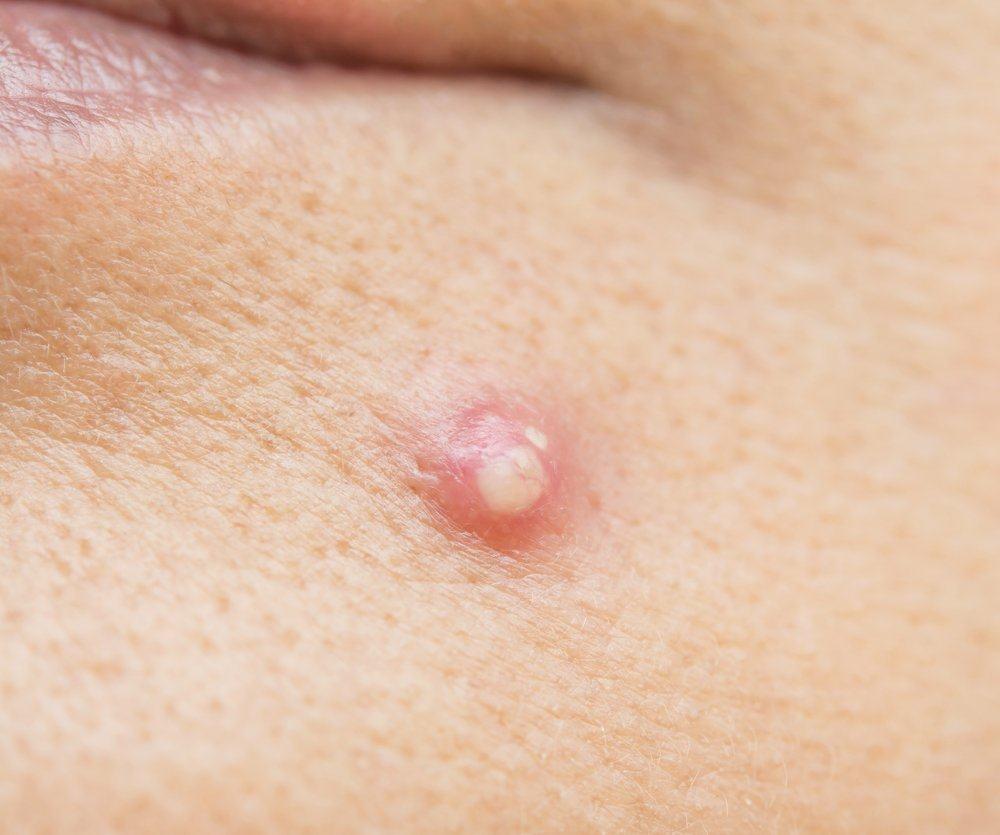What are the causes of ulcers/boil and how to treat them?
Boils are skin infections that attack the hair follicles or oil glands under the skin. Initially, boils look like a reddish rash on the skin that feels pain when touched. Over time, redness on the skin will form a hard lump, filled with pus and softened again when touched. Lumps can sometimes be as big as ping-pong balls.

Boils often appear on the body or back, neck, armpits, buttocks, or groin. But you can experience boils anywhere in the area of hairy skin that is prone to sweating or friction.
What causes ulcers?
The main cause of boils is the Staphylococcus aureus bacteria that lives on the skin, inside the nose and throat. Skin is an important part of the human body's immune defense against foreign matter and germs that cause disease. Therefore, damaged skin, such as being scratched or punctured, can be a gateway for bacteria to enter the body and infect the surrounding skin.
Some boils can also be caused by infection from ingrown hair. Infected skin disrupts the workings of the body's immune system so that the location of the wound becomes festering.
Anyone can boil. However, people with certain diseases or who take certain medications that weaken the immune system are more susceptible to developing ulcers. Diseases that weaken the immune system including diabetes or kidney failure. If you have a weakened immune system such as old age or HIV, you are also susceptible to ulcers.
A number of skin diseases that damage the protective layer of the skin, such as pimples and eczema make you more easily boil. Boils can be transmitted through direct contact between healthy skin and pus if you live and / or borrow personal items with someone who is bouncing.
How to treat boils: do not squeeze!
"Mature" boils can generally break by themselves within 1-2 weeks, marked by pus flowing out of the head of the boil. To speed up the healing process of boils, you can do home remedies below:
Compress warm water. Do it for 10 minutes, several times a day. Compressing warm water can reduce pain and provoke pus up to the surface. Boils can break on their own after several routine compresses. After touching a boil, always wash your hands with soap.
Wash with antibacterial soap. When the boil starts to dry, wash with antibacterial soap until all the pus is drained and wipe with alcohol. Apply antibiotic ointment and cover the wound with a bandage. Routinely wash ulcers and replace the bandage two to three times a day.
Do not squeeze boils. Squeezing boils can increase the risk of spreading the infection. If already spread, ulcers can cause more serious complications. One example includes cellulitis, a type of serious bacterial infection of the skin. Infection can also enter the bloodstream and trigger blood poisoning (sepsis) which has the potential to cause infection in organs in the body, such as the heart (endocarditis) even to the bone (osteomyelitis).
When should a boil be examined by a doctor?
Boil rarely requires medical treatment by a doctor. But visit a doctor if there are more than one ulcers at the same time, or if one or more of the symptoms appear below:
- Appears on the face
- Fever and chills arise
- Diameter of more than 5 cm
- Not cured in two weeks (does not go away after self-treatment)
- Your lymph nodes swell
- Lines arise or reddish on healthy skin around boils
- The pain is getting worse or very painful
You have a heart murmur, diabetes, problems with the immune system, or use drugs that weaken the body's immunity (eg corticosteroids or chemotherapy) and appear on the skin ulcers
If the infection has spread to deeper or wider tissue, pus samples can be taken to identify the type of infection-causing bacteria more accurately. The results of pus samples can guide the doctor about the choice of antibiotics that can be used to treat your problem. Examples of drugs that have been used in the treatment of boils include clindamycin, mupirocin, and cephalexin ointments.